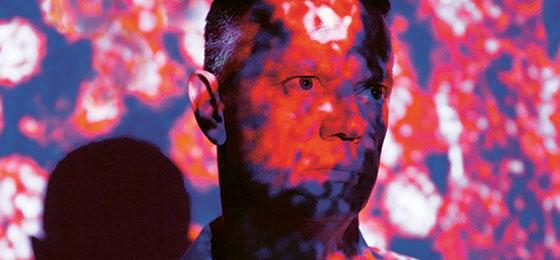Competitive funding by the SNSF promotes high-quality research

In 2017, the Swiss National Science Foundation (SNSF) invested in 2971 new projects. Each project had to undergo a stringent evaluation process in which it was rated relative to competing projects. This competition helps to raise the quality of Swiss research and plays an important role in maintaining its leading position in the global arena.
Every funding application that is submitted to the SNSF is tested in something like a casting call, which normally runs for six months. "We are looking for the best projects, therefore we should also have the best evaluation procedure," says Matthias Egger, President of the National Research Council.
To start with, the SNSF checks whether the formal requirements are met. Each application is then peer-reviewed by experts, most of them abroad. Two members of the Research Council then assess the project. Based on this, the Research Council decides on whether to fund a project or not. In career funding, applicants are also required to appear in person for an interview. "Our decisions are based solely on the quality of the project and the researcher's qualifications," says Matthias Egger.
New projects for a billion francs
2971 projects passed the evaluation process in 2017 and will now receive, in most cases, funding for the next four years. In total, the SNSF awarded more than a billion francs last year, an average of 350,000 per project. A fifth of this funding will be invested in the careers of young researchers. By promoting them, the SNSF is making a strong contribution towards securing the next generation of highly qualified professionals for universities, the private economy and public administration.
16,000 researchers in SNSF projects
By the end of December 2017, the SNSF had registered 5800 ongoing projects. Taking part in these projects were 16,000 researchers at universities, ETHs, universities of applied sciences, universities of teacher education and other institutions.
"Profile
" - annual report of the SNSF
Order a print edition of the "Profile
" under
www.snsf.ch/publications
Understanding and fighting the Lassa virus
In the annual report "Profile
", the SNSF presents some of the projects it has funded. One example is the research undertaken by virologist Stefan Kunz. He is investigating the Lassa virus, which is widespread across West Africa. It causes high fever and bleeding, often leading to death. "To this day, there is no vaccine or efficient treatment," says the researcher of the University of Lausanne. "Using modern biochemical and microscopic methods, we are now trying to establish how this virus infects human cells." The results are expected to pave the way for developing effective drugs.
Dye solar cells triggering a development boom
Many SNSF research projects develop their effect in the long term, as another example from the annual report shows. Forty years ago, the SNSF first funded the work of Michael Grätzel. The chemist at EPF Lausanne developed the Grätzel cell, a dye solar cell that is cheaper and more environmentally friendly than silicon solar cells. The current development boom in solar energy is based on the principle of the Grätzel cell. In the meantime, however, light is no longer captured through dyes, but by means of semiconductors, so-called perovskites. "The real revolution in the solar sector has not yet taken place," says Michael Grätzel, "but the dye solar cell has fueled a whole research field.”
For enquiries:
Angelika Kalt, Director of the Administrative Offices
Telephone : +
14
Contact
Swiss National Science Foundation
Communication division
E-mail
www.snf.ch